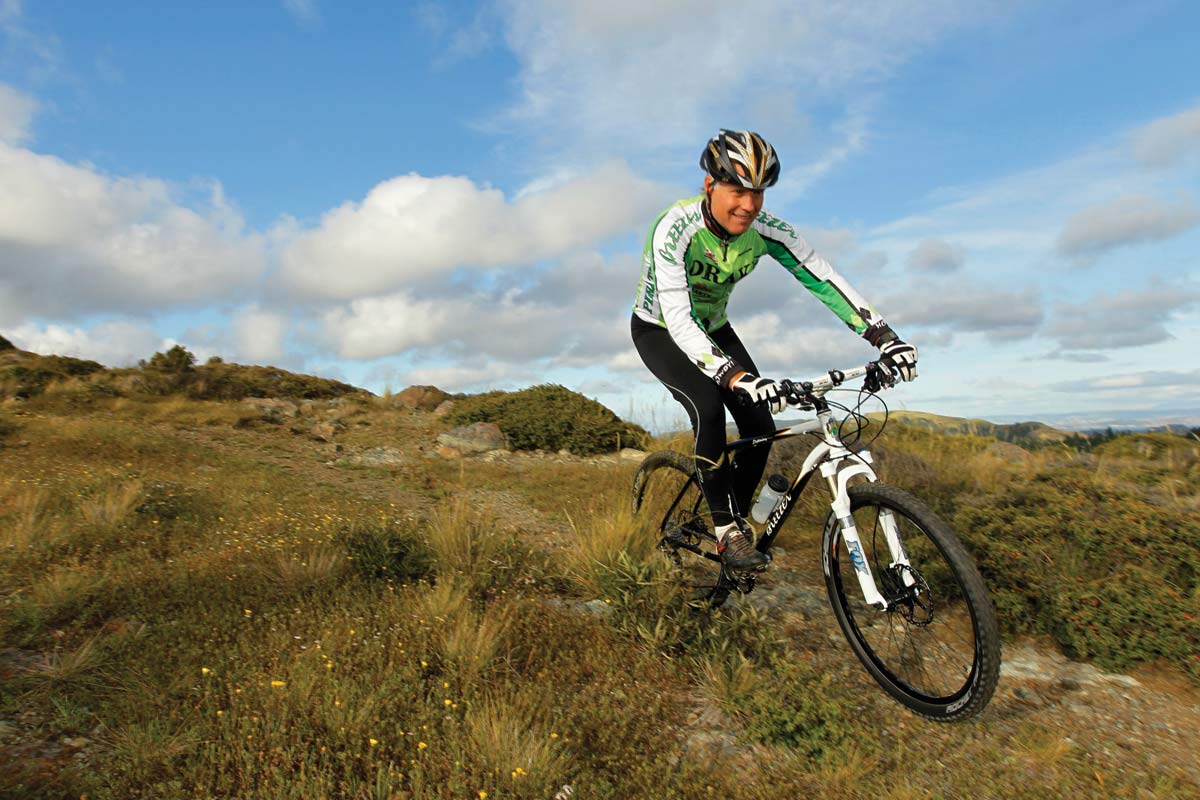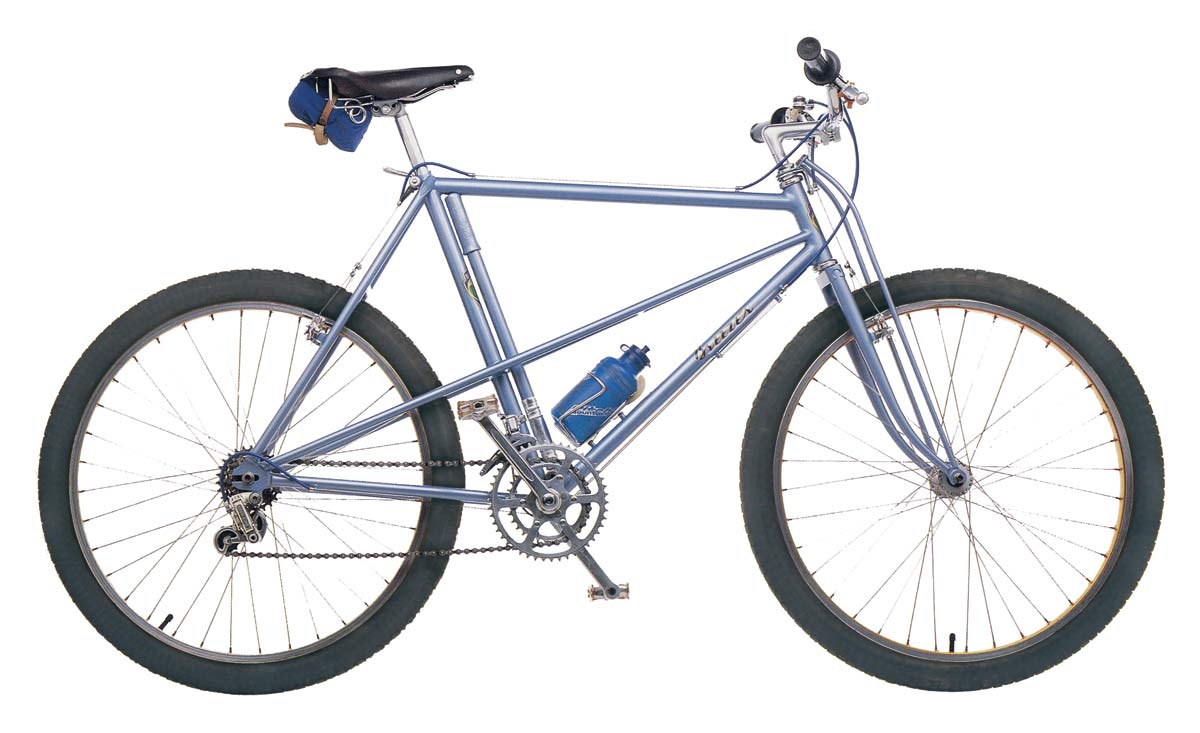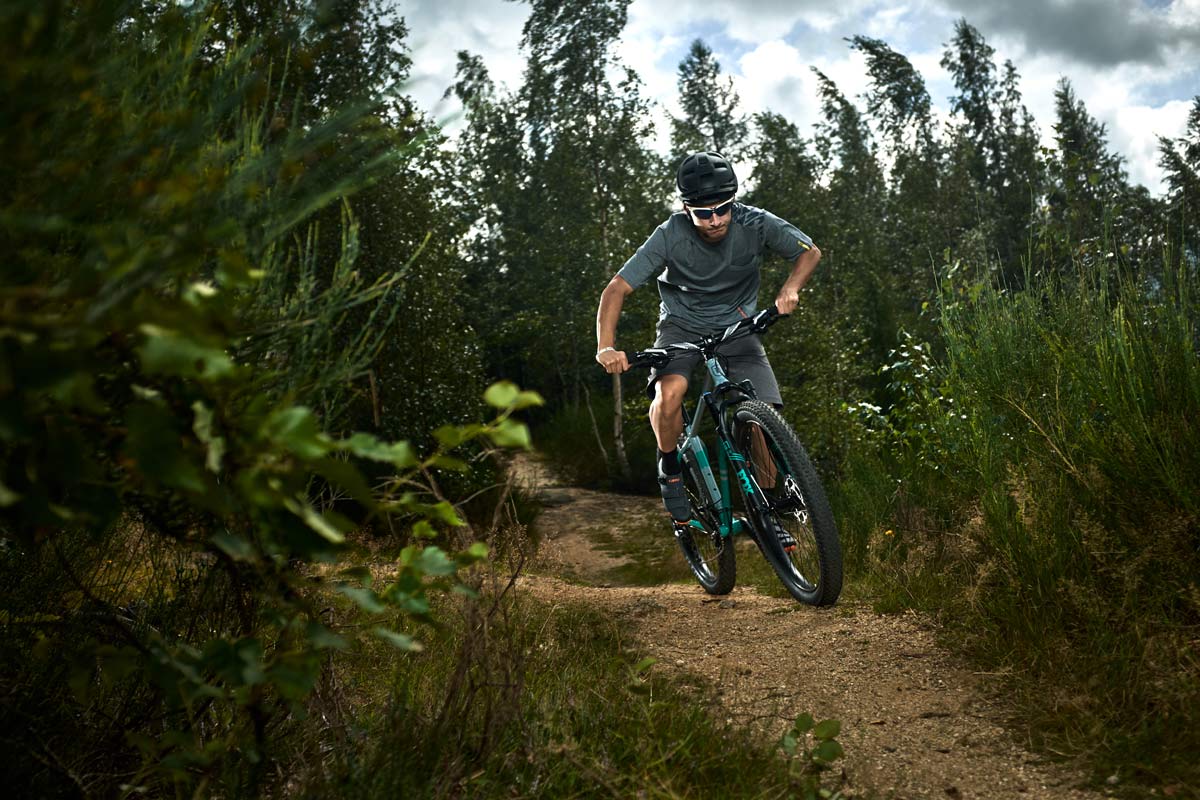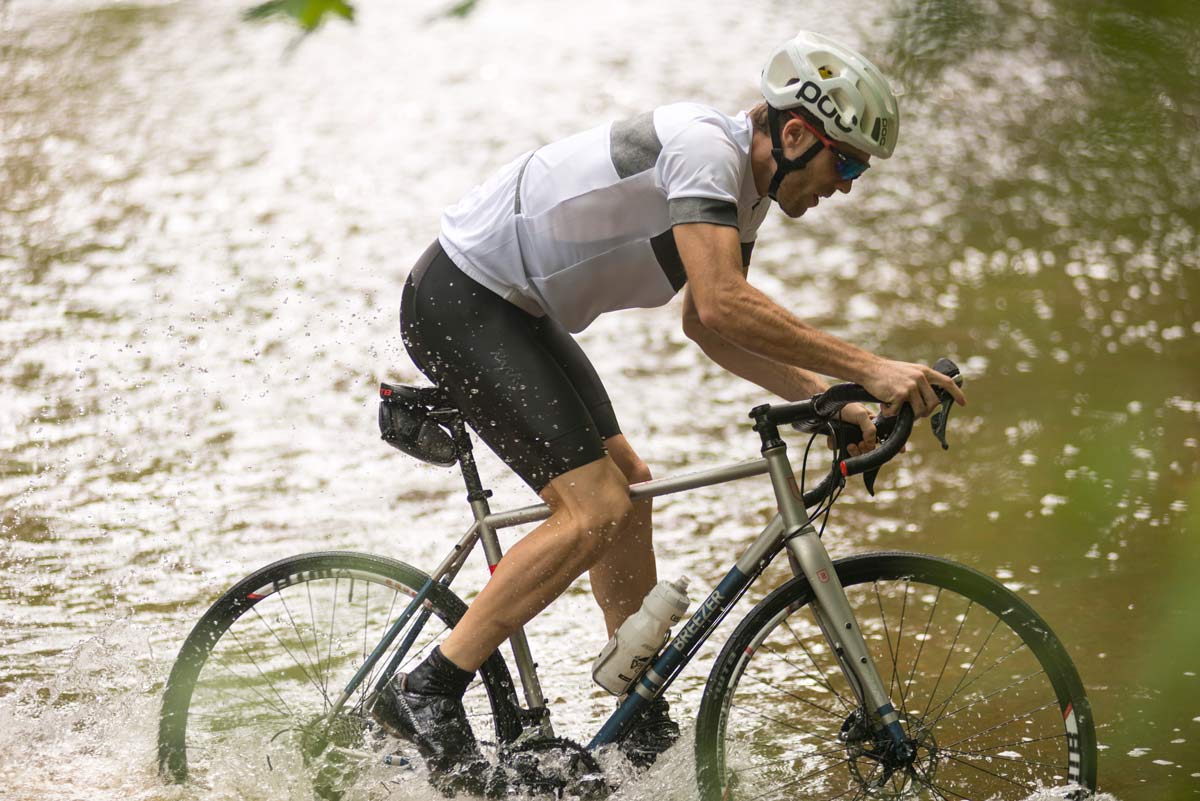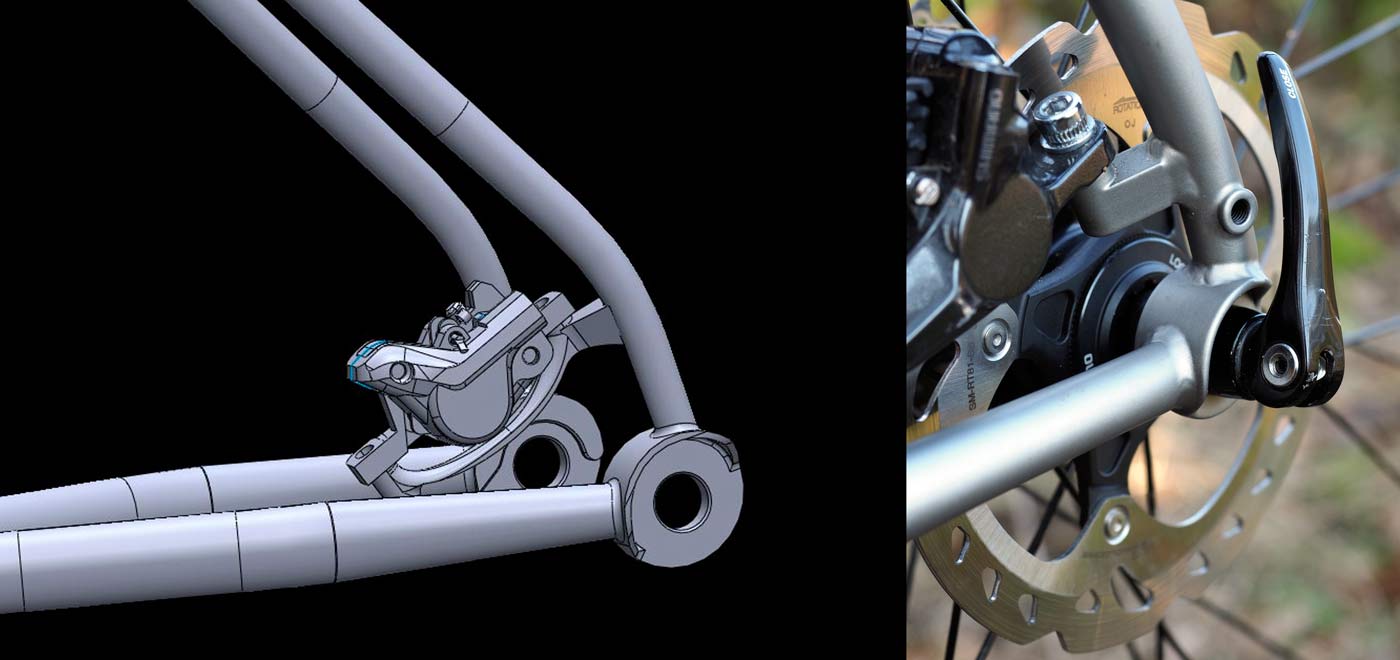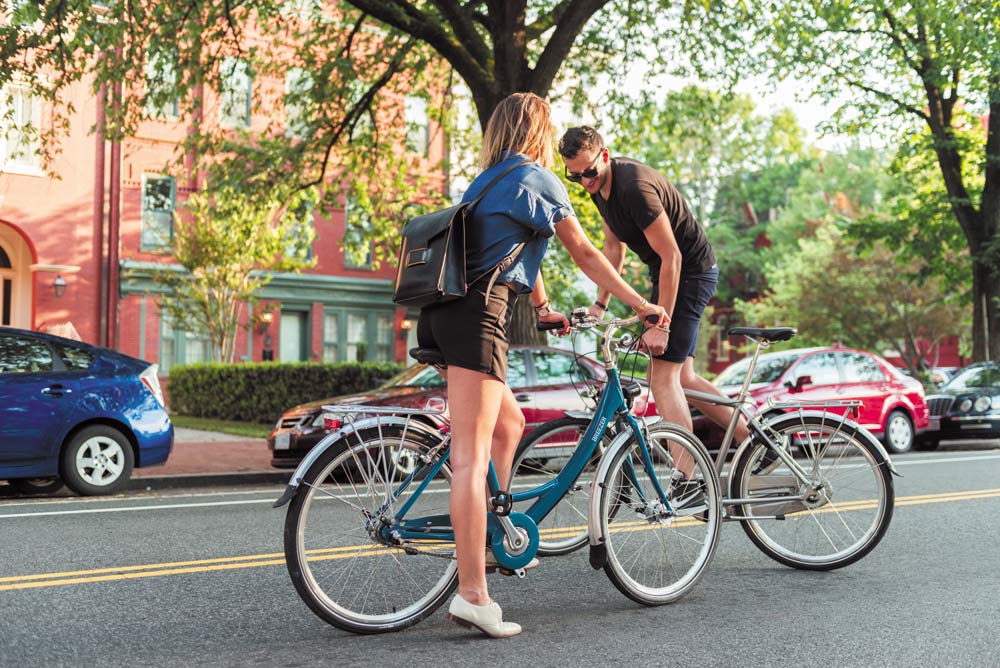In this audio interview, we’re talking with the whole crew over at Breezer Bikes, and it is a little bit smaller than you might guess. These days but they are focusing anew on the gravel adventure segment with their bikes, but they’re carrying through with founder Joe Breeze’s mission to get more people on bikes more often. But he didn’t start with those categories, and his current team is realiatvely new to the brand. Here, his story on starting the company, selling to ASI, and where they’re headed. Joining the conversation are Mark Vanek, product manager, and Lenna Cooper, brand manager. To kick things off, we asked Joe to share how started and provide a quick history of the brand, then we dive into the brand’s progression over the last few years and where it is headed. Following is a slightly edited transcription of the interview with photos, or just kick back, hit play, and listen to the full interview immediately below. And check out their latest video at the bottom…
JOE BREEZE: I got my start in the seventies amid the bike boom, working in bike shops, then making my own road racing frames – custom built road racing frames – since 1974. Albert Eisentraut taught me how to build frames at that time and then riding all over since I was a kid, all over California, eventually racing, raced road bikes all during the 1970s, eventually at Category 1 level and grew up in Marin County, just north of San Francisco, around Mt. Tamalpais. Eventually I fell in with the fat tire crowd that will have us, where I was kind of an instigator of that, actually, with our Velo Club Tamalpais with Gary Fisher and Charlie Kelly, etc., and that became our off season cycling fun and with the inception of the whole deal with Repack Racing. Kind of the crucible of mountain biking, forming in Marin County, and was the elected to build the first modern mountain bikes, built up with all brand new parts. The first shiny new mountain bikes were Breezers. And I actually won first Repack race I did on that bike. I had been racing the clunkers before that and winning, but my first ride was aboard that Breezer and that was about forty years ago, either October or November 1977. After winning the race I sold it. I had promised to make 10 frames and all the ones that weren’t sold were right then and there and after I won first race when it appeared you could win on one of these bikes and anyway the first shiny new mountain bike was right there and it is in the Smithsonian today. But I went on developing mountain bikes, was kind of known as a mountain bike guy but my love in cycling is all things cycling really and really including transportation and get where need to go and get health well. We are dong in saving our time and keeping up smile on our face all day long and there are different ways of cycling and of course adventurous cycling is part of that too.
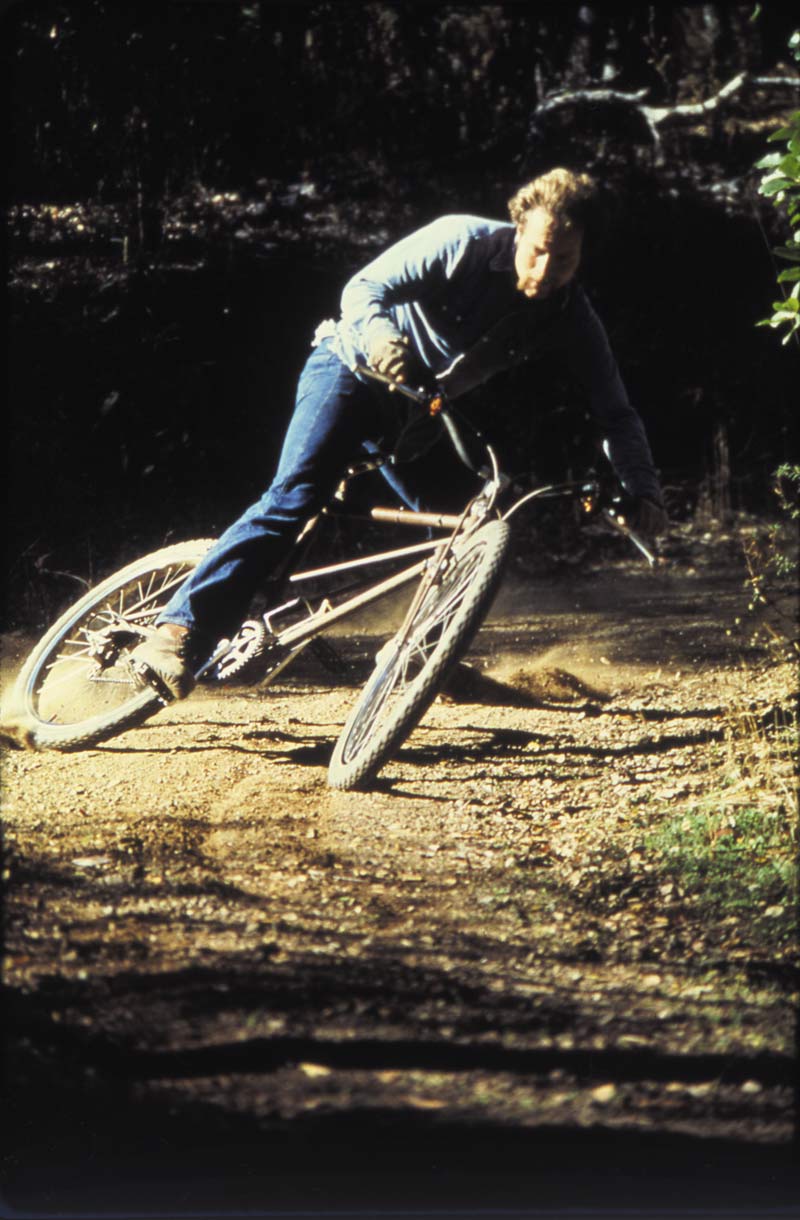
BIKERUMOR: For some of our younger readers that aren’t as familiar with the history, could you explain in your own words what is a clunker and what was Repack? Like why were some of those first bike races with industry legends called the Repack?
JOE BREEZE: So, the Clunkers, what we call a Clunker, anyway, in this case, is a 1930s, 1940s, maybe 1950s, old Schwinn balloon tires bicycle that were kind of ubiquitous in that day. Thirty years after kids were riding those bikes, we’d find them in the junkyard and repurpose them to ride down Mount Tam. The first organized mountain bike racing was Repack, downhill along the spine of a ridge, two miles down a hill, 1300 foot drop, 52 turns, a really good test of a downhill to prove who was the fastest. Because we were a bunch of competitive racers, right, and just needed to know that kind of thing – who was fastest? Anyway that first race solved nothing because if I hadn’t fallen down I would have beat you, so there had to be in other races. There were 24 Repack races, mostly in the late 1970s – ’76 to ’79 pretty much.
The reason for the name, it is just a natural name because we started with the coaster brake hubs on those old Clunkers. They were not up what we were dishing out going down that very steep hill. By the time you are half way to the bottom, if you had a look back, you would notice that you are being followed by a contrail of smoke. By the time you go down to the bottom, the darn thing is about on fire and you have to go home and repack the whole thing.
BIKERUMOR: So you basically you had one run out of the bike before you had rebuild the hub?
JOE BREEZE: Well, OK, so…not so much with some hubs, but you generally had to repack your hub at some point.
BIKERUMOR: That’s awesome. So from there, fast forward a bit. At Interbike a few years back, your line was really focused on city and commuter bikes. Why did you change your focus from mountain bikes to city bikes?
JOE BREEZE: Well, we started with the road bikes and mountain bikes. By the time everybody was making mountain bikes in the ’90s, I figured I’d get back to one the most important things to me and that’s just getting round on the bicycle.I grew up with that idea. My dad used to ride his bike to work back in the 50s. So I just had this idea of cycling having this very wide bandwidth and I was always surprised at how few people doing it in that way. When I took a trip to Europe 1971, I only was able to meet Cinelli, the man himself, but in Holland, I saw this fabulous infrastructure and adults getting around in their everyday lives and thought we got to do this in America. So that has been focus mine ever since then even before road bikes and mountain bikes. In the 90s, when everybody was making a mountain bike and recognized that people were interested in getting where they were going in their busy lives, that I wanted to make a more practical bike. People were repurposing their mountain bikes to ride in the cities, in the towns, but it would be lovely to have bicycle that was more like a car, that could carry things, when you parked it it didn’t fall over, may be at night, may be not even at night, you can have lights on your bike. Fenders so you didn’t get a stripe up your back. That became my focus. In fact I repurposed Breezer in 2000 to be only transportation bikes. No recreational bikes, no mountain bikes. Just so I could focus on it and really put that idea forward. We were the only bike company in America focusing 100% on transportation biking. When I sold the Breezer Brand to Advanced Sports International, makers of Fuji and a few other brands.
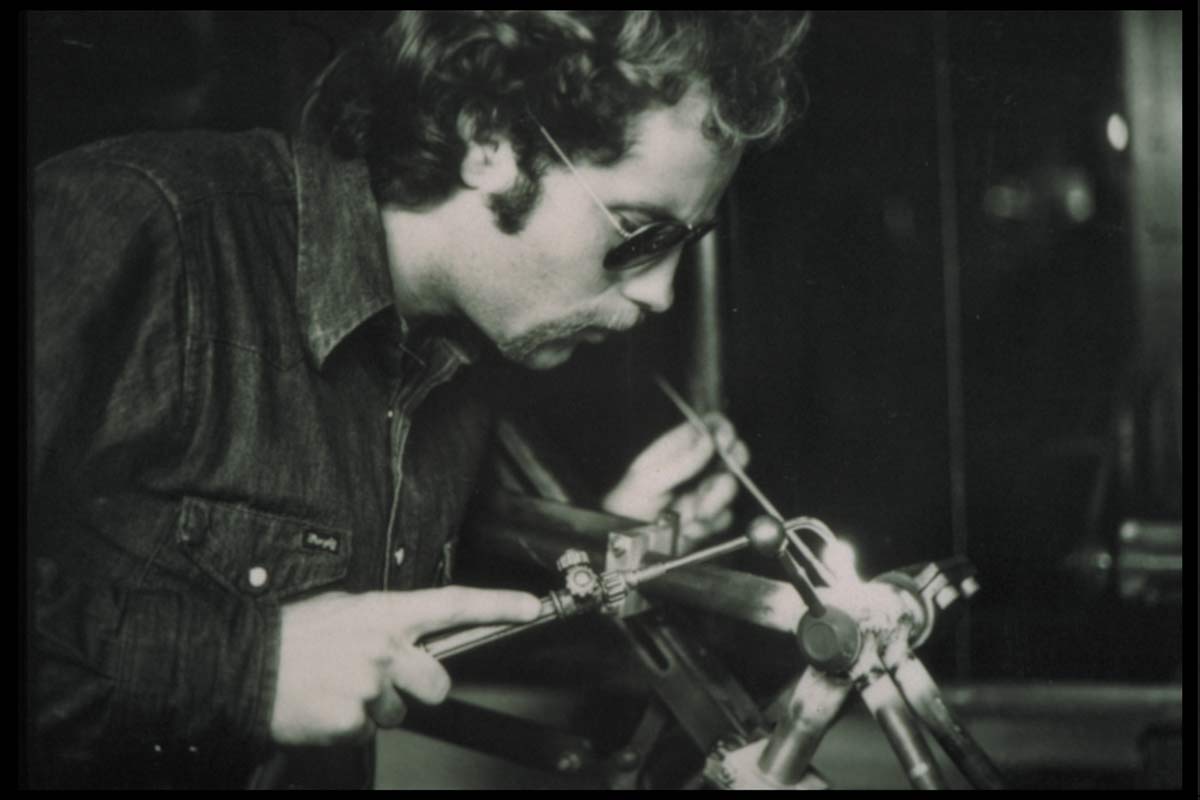
BIKERUMOR: So 2008 is when you sold, how did that effect your role in the company?
JOE BREEZE: Well, now I do the part I love most which is bike designing.
BIKERUMOR: Do you design every bike under the Breezer name?
JOE BREEZE: No, no. Special projects, new ideas and things like that. I still have my full machine shop and I can work out ideas, prototypes, things like that and contribute that way…..things like that.
BIKERUMOR: Do you come up with ideas when tinkering in your shop and then pitch it to ASI? Or do they come up to you, and say ‘hey, I think we need this to fill in your portfolio, what can you bring to the table?’
JOE BREEZE: It works both ways. I usually shoot ideas to Mark Vanek, our production manager, and run the stuff by him and he runs stuff by me. So we just work together to decide where this whole bike thing is going.
BIKERUMOR: A few years ago, you came out some full suspension mountain bikes, but it seems like pretty quickly the focus was off of that and back on city bikes, and now in the last year and a half/two years the focus is on the burgeoning gravel adventure bike scene.
JOE BREEZE: I was very happy with our mountain bikes. Really it’s Mark Vanek who came up with the gravel / adventure bike thing. I’m really impressed with the work he has done, putting together three models – Radar, Doppler and Inversion lines adventure bikes. It’s a delightful thing for me to see because that was one of my early interests in bikes, just to be able to get around in so many different terrains on a versatile bike like that. So it’s a good direction of ours now. We still do transportation bikes, fully equipped bikes for everyday. But that’s the fun avenue we are going down now.
BIKERUMOR: Mark, you can chime in on the the decision to do these kind of gravel adventure bikes. What was the impetus? How long did you start working on them before they actually came out?
MARK: The first model year of the Inversion, which is the highest end gravel all-road bike that we do, that came out in model year 2017. We started working on that a year or year and half before that. You know, I guess kind of that background of all that was, I came from the opposite direction of Joe. I started mountain biking first in the early ’90s and then got into road riding or training primarily ’cause I started racing mountain bikes and I got into my first Expert race and getting my rear handed to my by all the really fast Experts. Talking to them afterwards, I learned that a lot of them were training on the road. So I started road riding, primarily to train for longer mountain bike events. At that time I was living in Central California, which is super flat with this huge system of irrigation canal systems. It made it fun for a mountain biker were, if I had to just sit on road bike for bunch of hours I could at least go ride in the dirt on all those canals and crisscross all the gully while I was training for mountain bike events.
BIKERUMOR: What year was that?
MARK: That started in the early 90s, may be ’93 or ’92.
BIKERUMOR: So WAY before the current gravel explosion were seeing?
MARK: Yeah. There was cyclocross for sure, but for myself I was a teenage kid I could barely afford a mountain bike. So I really didn’t have the ability to get a quiver of bikes for training on. So I had a a hand me down bike that I just tried to make work in as many different terrains as possible.
Fast forwarding, as I got into the bike industry, just like most people in the bike industry, they just love bikes in general and ride any kind of bike I can whether it’s road, ‘cross downhill or traditional mountain biking. Getting into Breezer, it was really interesting and enlightening meeting Joe and in particular going to visit Joe at the museum one year before Sea Otter at the bicycle museum in Fairfax and seeing one of his early road bikes. Like you, I also had no idea that he started on the road side of things. I only knew of Joe from mountain bikes side of things as well.
It’s interesting when you see some of the older road events and the tires that were used when they had to ride across mixed terrain. They were definitely be doing gravel long long time ago. And then you have someone Joe’s colleagues like Charlie Cunningham doing the CC photo, which is a bike that predates a lot of modern bikes with things like a compact geometry, 1x drivetrain, a makeshift clutch derailleur, all sorts of really cool things. SO, I had my upbringing of riding a lot of different terrain, with a goal of making mountain biking more enjoyable for myself and being more competitive. It kind of transformed my road riding into an activity where I can ride on any terrain. So when Joe and I started working together, the gravel bike idea was already out there, but our idea was to make the road bike for mountain bikers.
A bike that was fully capable of logging road miles, you could sit in on a week night ctrierium to do your speed work, but it had the on midnight for practice session and whatever up to your speed work, but it had the legs and the tire clearance to go off road if you wanted. Working with Joe, there was this huge well of knowledge on tubing design, geometry, structure, all this stuff Joe had worked on for the past four-plus decades to make that first project, the Inversion, come to life. And then, it had some of its younger siblings, the Radar which has more tire clearanc, kind of more geared towards riders that will spend more time off road than on. And new for 2018 is the Doppler series which is really more of a rando flavor bike with 650B wheels. It’s a bike that’s going to spend a lot of time on bad roads.
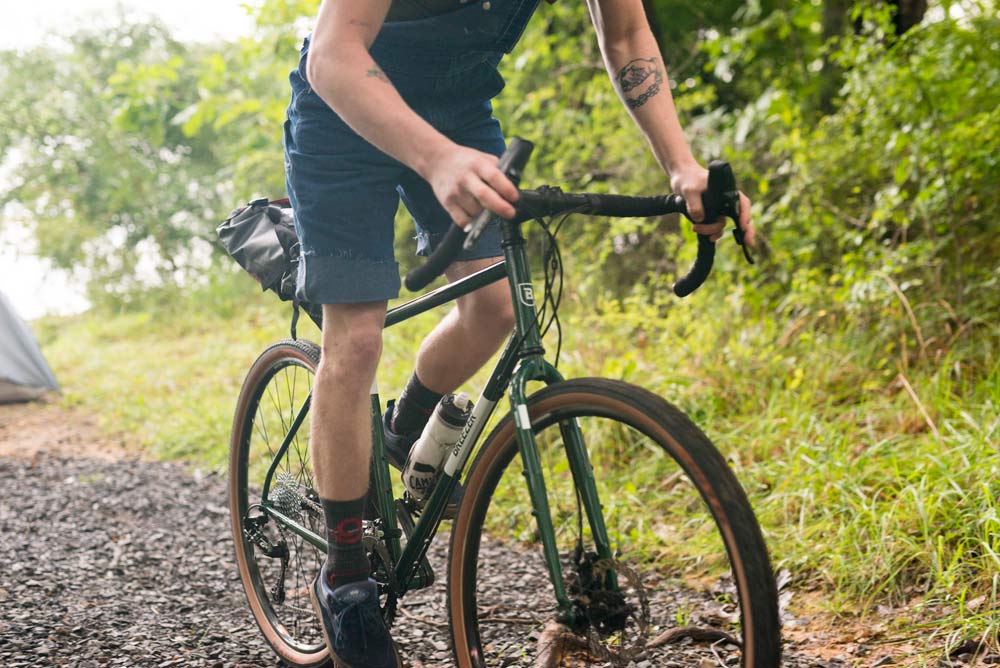
BIKERUMOR: When did you join Breezer?
MARK: I started with ASI in 2014, I took an open position working on components. Before that I was working in California on bikes for 13 years before that. I started working with Joe in late 2015, so a pretty new relationship still.
BIKERUMOR: That’s pretty quick to come up with three different models. It’s not like you came up with all them at once, there was the Inversion, then the Radar and then the Doppler. So, two and a half or three years, its pretty quick to develop three distinct models. You must have hustled to make that happen? It seems like the normal development cycle is one and a half to two years?
MARK: Well, part of it was, I think, Joe and I melded pretty well together with a lot of ideas, values and bikes. Joe is a pretty dedicated person in design work – we definitely had a couple of calls that went into midnight designing stuff.
JOE BREEZE: (laughs) Was it just a couple?
MARK: Joe, you’re very much a night person and not a morning person. And it’s funny because before I started with ASI I lived maybe three miles north of Joe, then I moved across the country, and a year later I started working with Joe again, located back in California again. I think that kind of background helped us make up a lot of ground quickly. We both road the same area, the same terrain, kind of have same view points on lot of stuff so it made things click really quickly. And of course Joe has so much design background. And I had done product management before, so I had a good understanding of product and construction and all that. Ya, I think just kind of the combination of being in the same area, and having similar eye toward the horizon, it really helps us to make a few bikes really quickly. We didn’t need of lot of deleopment time. It was kind of there for us.
BIKERUMOR: And ASI is based on the East Coast?
MARK: Yeah, were in northeast Philly, so I moved out in the country of northeast Philly to be out in the woods and have something as close to Marin County as I could.
BIKERUMOR: What I’ve noticed with mountain bikes -not so much with the major global brands, but more with the mid-sized brands like Santa Cruz, Niner, and then on down to the smaller brands like Evil, etc.- is that the bikes, the geometry, the BB height and the suspension are all really dialed to those company’s home trails. How does that translate to gravel? You’re both from Marin and used to riding there. Are your bikes designed to really perform well for that terrain but maybe not translate as well for east coast terrain?
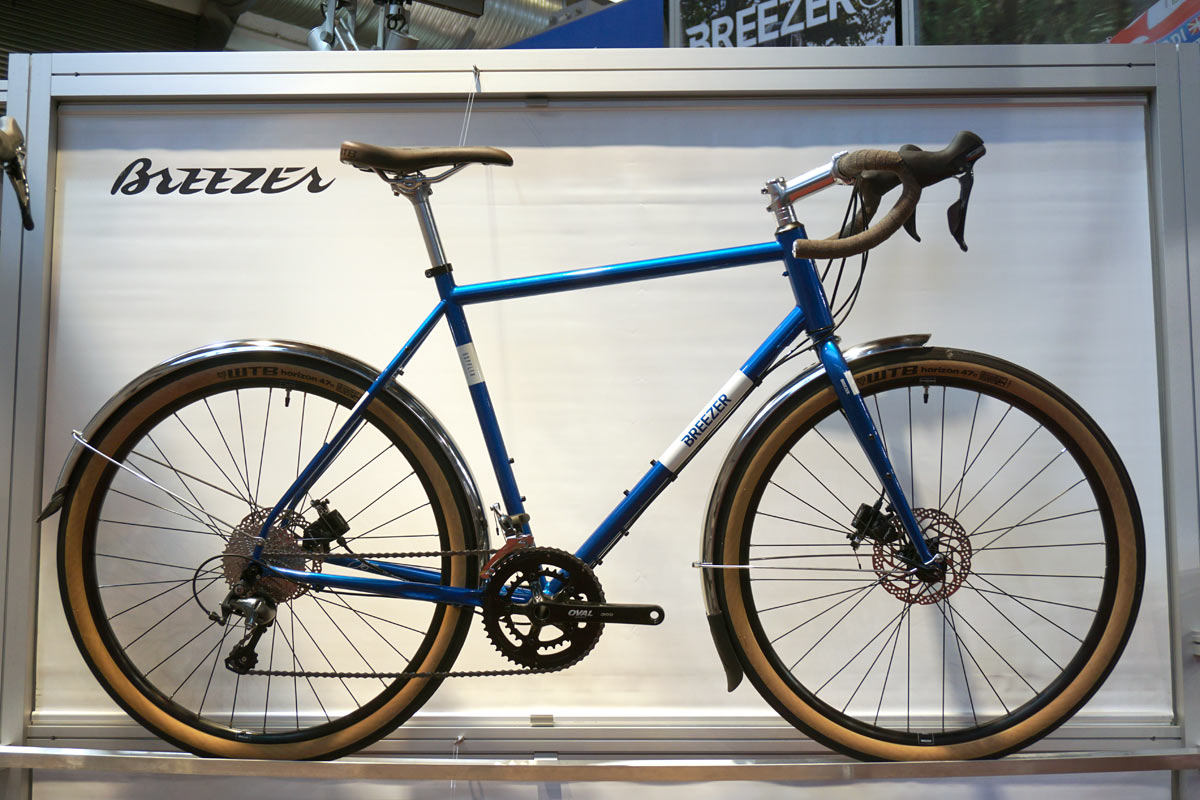
MARK: With all three platforms, it’s a pretty universal geometry. If we talk about the Inversion first, that’s a bike that’s got a pretty decent BB drop to it, so it has a nice stable low center of gravity. It’s designed not so much as a technical singletrack ripper going over logs where you’re trying to avoid pedal or chainring strikes. But if you’re hauling through a downhill section on gravel, it’s a really predictable ride and you’ve got a really low center of gravity so it’s stable and you can help steer that bike with counter steer and hip input versus actually having to turn the bar and potentially fold the front wheel underneath you.
In the different areas where I’ve lived in California, that always translated in a similar way whether it was riding on a flat canal bank outside of Fresno or bombing Bolinas ridge in Marin.
BIKERUMOR: Let me ask it a little bit differently – when you go ride those bikes out in California, do they feel like they’re performing more in their element than when you’re riding them back in Pennsylvania?
MARK: I feel like they don’t. Out here in Pennsylvania, there’s a pretty large selection of dirt roads and really bad farm roads. I don’t really see that translate the same. On the mountain bike side, with some of the bikepacking stuff we do, like the Lightneing steel hardtail, that’s a bike where we had a lot of influence from Joe’s philosophy of mountain biking and definitely being that kind of Marin County geometry were you ‘re dealing with tight trails and lots of switchbacks. Whereas if you’re headed down to SoCal and you’re trying to bomb a rutted fire road, it’d definitely feel different.
You kinda saw that if you think about bikes in the ’90s like the old school GTs, where they were a 70º head angle and everyone else was 71º or steeper. That was definitely a turf thing because those were the bikes they were riding really fast fire roads and wanted a little longer front center and stability versus the guys riding further north that wanted more agility in the tight stuff.
BIKERUMOR: What do you do to set your bikes part from other gravel adventure bikes on the market?
MARK: For me, with the Inversion, I was blown away by Joe’s knowledge on steel tubing and tube forming. And little things like where he’s placing the tubes, like where the other tubes are perched in relation to the the head tube and being super critical of those measurements. Everyone’s trying to optimize frames, but also trying to make bikes that we can reliably make in volume, especially when it goes to overseas production. It was really eye opening working with Joe on the Inversion project because there were a lot of painstaking details that we needed to put into those bikes to get them right and ensure they were built the way he was building them in his workshop.
JOE BREEZE: Over all my years of designing frames, one of th thing sI focus on is how to get as much tubing as possible into a frame. Or, how to reduce the joinery to its bare minimum. Because the tubing is the star of the show. That’s what’s giving us a lively feeling bicycle, one that feels like a spring, and doesn’t have that dead feel like a lot of frames do. And that’s by making sure that joinery is reduced to its absolute minimum so you can have that cool tubular stuff in there as much as possible. And that’s always the challenge is making sure as much of that as possible comes through in production.
MARK: An example of that on the Inversion, Joe had created the Breeze-in dropout that a lot of people are familiar with…
JOE BREEZE: The hooded dropout where you have a real good contact from the chainstay to the rear axle and it’s half the weight and twice the stiffness as the old door hinge dropout…just a huge swinging gate at the end of the chainstay.
MARK: Yeah, the dropout was a bit of a challenge where a bit of a focal point was making a thru axle rear end. What I’d seen in the past with a lot of builders was you’d either make a CNC’d dropout that has some length to it that had the brake mount and the dropout for the thru axle all together, which was something Joe had enlightened me on of trying to eliminate a CNC’d area like that to ensure we had as much tube length as possible to make sure the ride quality was as dialed as possible and the dropouts were as compact as possible.
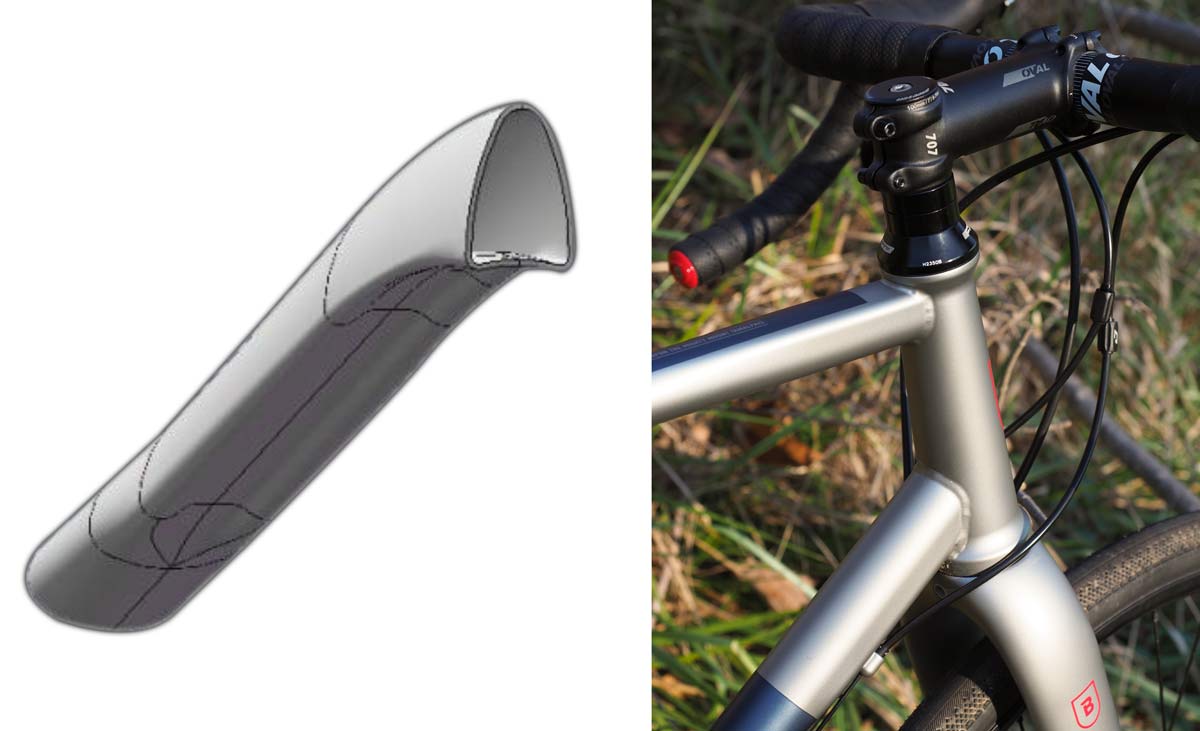
BIKERUMOR: When you’re talking about fine tuning the meeting place of the top tube and head tube, how hard is that to translate into mass production?
JOE BREEZE: That’s hard, right there. You’re just trying to get the top and down tubes as far apart from each other on the head tube. So you increase your perch, that’s what we call our max perch. If you have them too close together, it’s like a pivot point there, and that big cantilevered beam we call a fork is wearing on that joint right there. So if you can make that perch as wide as possible it’s gonna strengthen the frame dramatically.
BIKERUMOR: So, do you just try to put a really tall, or taller than normal, head tube on there?
JOE BREEZE: No, no. All I’m saying is per head tube length, buy having the perch of the top tube and down tube as far apart as possible, you’re ahead of the game. Of course, with some big wheel and long travel bikes, that head tube is gonna be pretty darn short, but if you can maximize the perch, that’s what you want to do.
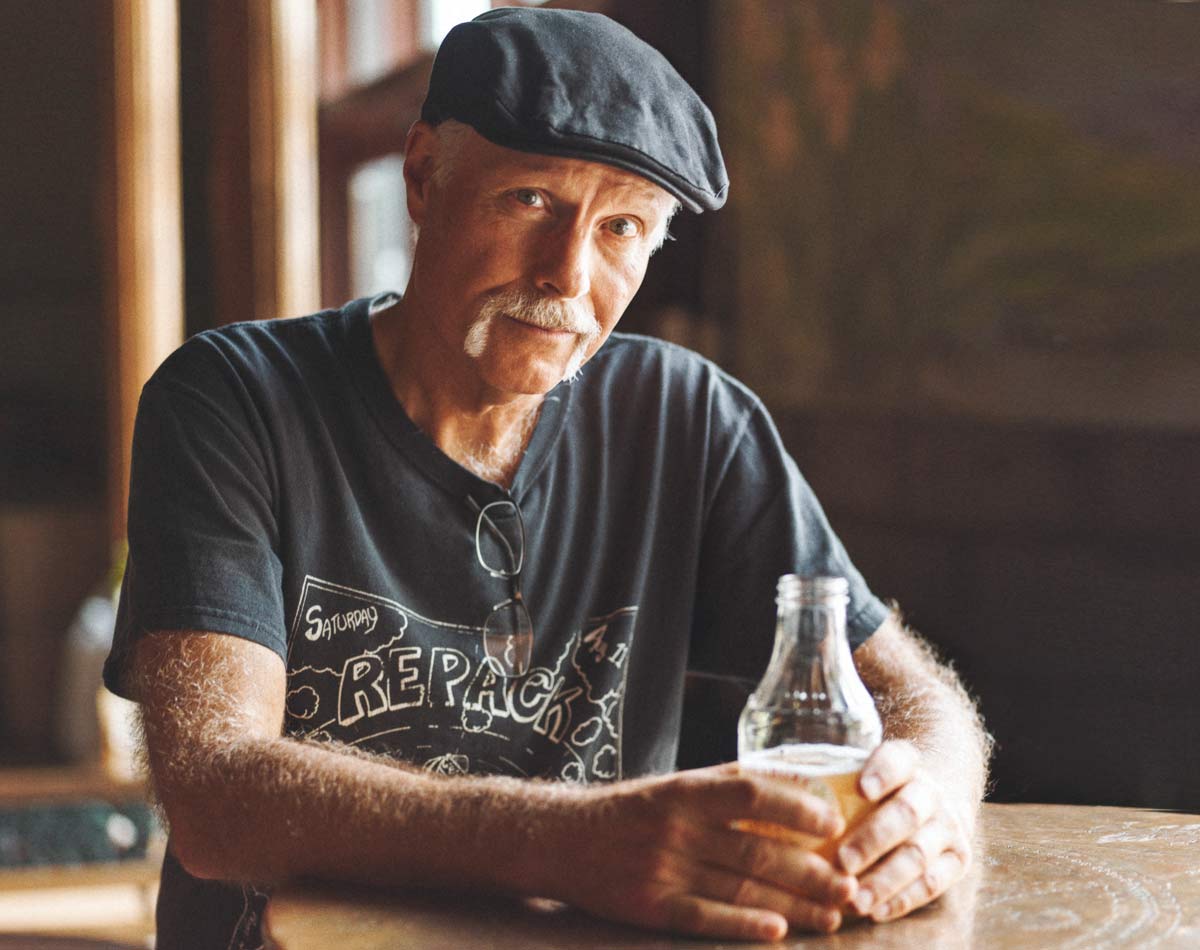
BIKERUMOR: I’m curious, in the 9-1/2 years since you sold company, and as you’ve seen others like Gary Fisher and Keith Bontrager sell to bigger brands, do you care about maintaining the spirit of the brand once you’ve been paid and you’re out? Is it hard to keep your personality in the brand once it’s owned by a larger company?
JOE BREEZE: Sure! I’m always hoping to put my indelible fingerprint on the machine. Yeah, I’ll be honest, it’s a challenge. But it’s a bigger production, and I can keep working at it and making sure things aren’t getting lost in the translation. I’m still engaged with it and still making the good fight.
BIKERUMOR: Did you negotiate to stay involved? Or did they negotiate to keep you involved?
JOE BREEZE: Oh, no, they were quite happy to keep me on board and keep the continuity of my ideas on the project.
LENNA: ASI is a lot smaller of an operation than a lot of people think, so in terms of keeping Joe really involved in the brand and the spirit behind it of what he built, we’ve recently done an internal restructure to crate a brand manager position where I can work more closely with Joe. Having a team where Mark does product and I work with Joe on the brand, it gives us an opportunity to reinvigorate the brand with the original essence that he built the company after.
BIKERUMOR: Were you without a brand manager for a while?
LENNA: We just had a general marketing managers (for ASI), no one was specifically focused on Breezer except for Mark on the product end.
BIKERUMOR: Joe, what was your motivation to sell the company?
JOE BREEZE: Well, being always such a small company and having a limited amount of impact, with the transportation bike market expanding in this country, here I was as this voice saying ‘hey, we could expand cycling 10x by putting biking more on the order of eating and drinking where it becomes more of a need than a want. We all need to get healthy, we all need to get places with the extraordinary efficiently of the bicycle. You could do those things and even save yourself time, and then with more bike companies focus on transportation biking, I felt i t was time to kick that up to the next level so I wanted to partner with a larger company that had the resources to get more everyday bicycles out there. And then to be able to do more than than, start to do the mountain bikes and recreational bikes again.
BIKERUMOR: Gravel and adventure bikes are what you’re pushing at the moment, but you’ve still got the city and commuter bikes, so where are you headed? What’s next? What are we going to see in five years from Breezer?
MARK: It’s trying to be solid with the offerings we have noe. And what ever comes out being true to the Breezer name. Making sure it’s a bike that has Joe’s fingerprint on it, so probably no downhill bikes.
LENNA: Were definitely going to continue with the idea of bikes for your everyday adventure. So, continuing to expand the trekking and commuter lines. And the adventure series, by not just gravel bikes. It could be a hardtail adventure bike, it could be something on the road side. Just focusing on a really robust line of bikes so that you really can find something from Breezer that you could go on any type adventure you want on a bike.

JOE BREEZE: Maybe even something with a little assist…
LENNA: We do have one e-bike in the US and two in Europe. They’re not a huge part of our line, but it’s something you can ignore at this point.
BIKERUMOR: How do you see that growing in the US? It’s huge in Europe, how long do ou see before the US market is more open to it? And how long before it’s more saturated?
JOE BREEZE: I think for every day getting around, e-bikes are going to be the next big thing. It’s already here in Marin County, you see them everywhere. And you see the gears turning and the light bulbs going on. It’s going to be a huge market.
As far as offroad goes, we have to sort out a few of the land management issues. We need to make sure…you know, a whole lot of people worked very hard to trail access and we don’t want to see that compromised by poor planning on our part. So once we get better planning in place and get territories set aside for use of these vehicles off road, then so much the better.
BIKERUMOR: Is there anything else you’d like to add about Breezer’s current state and where you’re headed?
MARK: Our goal is to make bikes that everyone enjoys. When I started riding , I couldn’t afford a custom bike or something of the stature of Joe’s original designs. So when he turned to make bikes focused on the greater population of riders around the world, whether transportation or mountain, that was something that struck a chord with me. It’s a gift to be able to work with Joe now and help him make bikes reminiscent of bikes he handbuilt in his workshop that benefit from his design background, but for everyday riders.
BIKERUMOR: I really like the quote you had early, that the bikes you’re building now -the Inversion, Radar and Doppler- are road bikes for mountain bikers. That kinda sums it up, what we’re doing, when you can get one bike that cross those bridges it’s just fun.
JOE BREEZE: The whole idea is just to get more people on bikes more often and diggin’ one of mankind’s greatest inventions.
BIKERUMOR: Awesome, thank you so much for your time!
Bikes discussed include:
- Early Bikerumor coverage of their commuter bikes
- Lightning hardtail mountain bike debuts in 2010
- Inversion
- Radar
- Doppler
